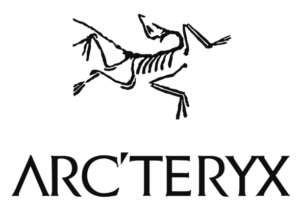
Sponsored by ARC’TERYX
As trail runners, we often forget that the land we traverse is rooted in history with trails used and maintained by generations of Indigenous cultures. Those untouched areas still exist but are much harder to find. In North America, there is land within the territory of the 657,745 acres of Mount Edziza Provincial Park in beautiful northwest British Columbia, Canada, and the history is not to be overlooked. While much of the undeveloped wilderness area showcases a striking volcanic landscape morphed by massive lava flows, expansive basalt fields and more, the narrative of the land lies even deeper in that of the Indigenous Tahltan Nation that have inhabited much of the areas within the park for thousands of years.
The Tahltan, also known as the Nahani, are a part of the vast Athabaskan-speaking group that encompass much of northwest Canada and stretches into Alaska. Members of the Tahltan predominantly live in northern British Columbia around Telegraph Creek at the confluence with the Stikine River, Dease Lake and Iskut near the northern part of Eddontenajon Lake. Thousands of years ago, the Tahltan people used obsidian from the stratovolcano Mount Edziza to make tools, weapons for hunting and to trade with neighboring tribes.

While the 9,143-foot peak still assumes the name assigned to it by the Canadian government, the leaders of the Tahltan Nation secured a big win just last year in the renaming of the Mount Edziza Conservancy to the Tenh Dẕetle Conservancy (Ten-thet-luh), which translates to “Ice Mountain.”
The renaming of the 35-square-kilometer portion of land located on the eastern slope of Mount Edziza is important to the Tahltan Central Government and their people because it represents a much larger effort by the Tahltan Nation to exhibit more of a leadership role in the co-managing of their ancestral land and mineral resources. It’s a step forward in the long process of British Columbia’s reconciliation with the Tahltan and helps restore an opportunity for the increased obsidian mineral exploration that can lead to shared wealth within the community.

Not too far away is a sizable drainage basin known to the Tahltan people as the Sacred Headwaters. It’s where three different wild salmon rivers—the Nass, Stikine and Skeena—converge, and is also a place where a remarkably large population of caribou, goats, grizzly bears, stone sheep and wolves continue to thrive. It’s also a piece of land that the Tahltan have hunted and subsisted on for tens of thousands of years.
Rich in mineral and energy resources, in particular coal and methane, the Sacred Headwaters have long been sought after by international energy companies. The Tahltan leaders have fought hard for decades to halt allowing any projects to extract these resources from their hallowed grounds and in the spring of 2015, they won big; the British Columbia government purchased all coal licenses in the area, thus stammering any future development. This coincided with the Tahltan Central Government beginning work on a long-term plan to continue to protect the Sacred Headwaters for many generations to come through education and preservation programs.
In a show of moving forward with thoughtful exploration, and in an area of BC known as the Golden Triangle, the Tahltan are working with other mineral exploration companies to responsibly mine the area’s commodities. By working in tandem, there are benefits to not only the Indigenous communities directly involved, but also bearing the potential for becoming a part of a larger solution to find minerals to assist with a lower-carbon future, pushing technological advances and helping to build more resilient global economies.
While these examples show a commitment by Canada and British Columbia to remediate and reverse years of injustices done unto the Tahltan Nation, there is still much work to be done. As trail runners and users of the land, we can resolve to band together with the Tahltan and other First Nations around the continent to help pave the way for a brighter future for decades to come.


